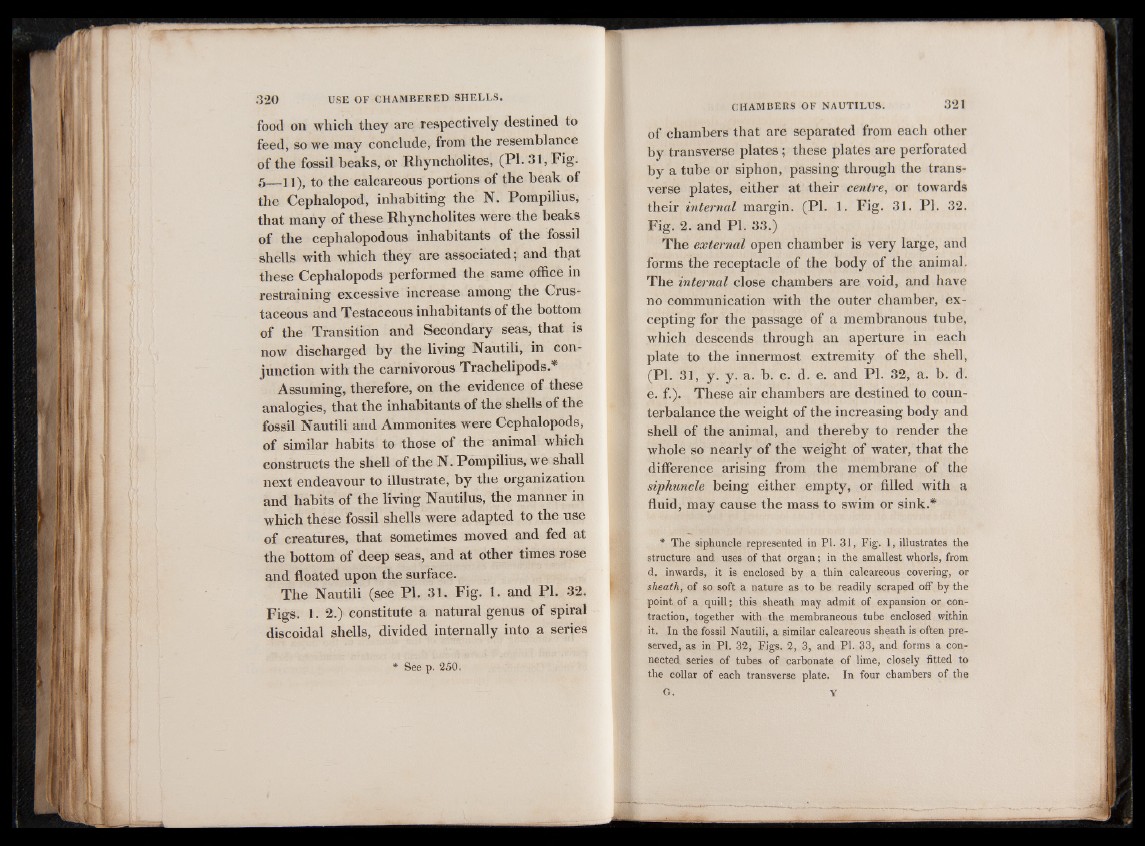
food on which they are respectively destined to
feed, so we may conclude, from the resemblance
of the fossil beaks, or Rhyncholites, (PI. 31, Fig.
5— ii), to the calcareous portions of the beak of
the Cephalopod, inhabiting the N. Pompilius,
that many of these Rhyncholites were the beaks
of the cephalopodous inhabitants of the fossil
shells with which they are associated; and that
these Cephalopods performed the same office in
restraining excessive increase among the Crus-
taceous and Testaceous inhabitants of the bottom
of the Transition and Secondary seas, that is
now discharged by the living Nautili, in conjunction
with the carnivorous Trachelipods.*
Assuming, therefore, on the evidence of these
analogies, that the inhabitants of the shells of the
fossil Nautili and Ammonites were Cephalopods,
of similar habits to those of the animal which
constructs the shell of the N. Pompilius, we shall
next endeavour to illustrate, by the organization
and habits of the living Nautilus, the manner in
which these fossil shells were adapted to the use
of creatures, that sometimes moved and fed at
the bottom of deep seas, and at other times rose
and floated upon the surface.
The Nautili (see PI. 31. Fig. 1 . and PI. 32.
Figs. #: 2 .) constitute a natural genus of spiral
discoidal shells, divided internally into a series
* See p. 250.
of chambers that are separated from each other
by transverse plates; these plates are perforated
by a tube or siphon, passing through the transverse
plates, either at their centre, or towards
their internal margin. (PI. 1 . Fig. 31. PI. 32.
Fig. 2 . and PI. 33.)
The external open chamber is very large, and
forms the receptacle of the body of the animal.
The internal close chambers are void, and have
no communication with the outer chamber, excepting
for the passage of a membranous tube,
which descends through an aperture in each
plate to the innermost extremity of the shell,
(PI. 31, y. y. a. b. c. d. e. and PI. 32, a. b. d.
e. f.). These air chambers are destined to counterbalance
the weight of the increasing body and
shell of the animal, and thereby to render the
whole so nearly of the weight of water, that the
difference arising from the membrane of the
siphuncle being either empty, or filled with a
fluid, may cause the mass to swim or sink.*
* The siphuncle represented in PI. 31, Fig. 1, illustrates the
structure and uses of that organ; in the smallest whorls, from
d. inwards, it is enclosed by a thin calcareous covering, or
sheath, of so soft a nature as to be readily scraped off by the
point of a quill; this sheath may admit of expansion or contraction,
together with the membraneous tube enclosed within
it. In the fossil Nautili, a similar calcareous sheath is often preserved,
as in PI. 32, Figs. 2, 3, and PI. 33, and forms a connected
series of tubes of carbonate of lime, closely fitted to
the collar of each transverse plate. In four chambers of the
G. Y